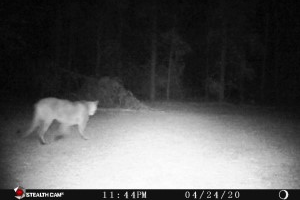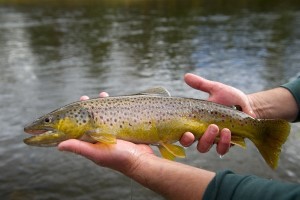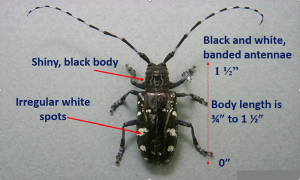|
Some of the items in this week's news digest reflect the impact of COVID-19 and how the Michigan Department of Natural Resources is adapting to meet customers' needs. Public health and safety are our biggest priorities, and we will continue to share news and information about the safest, and sometimes new, ways to enjoy our state's natural and cultural resources.
Follow our COVID-19 response page for FAQs and updates on facilities and reopening dates. For the latest public health guidelines and news, visit Michigan.gov/Coronavirus and CDC.gov/Coronavirus.
Here's a look at some of this week's stories from the Department of Natural Resources:
See other news releases, Showcasing the DNR stories, photos and other resources at Michigan.gov/DNRPressRoom.
PHOTO FOLDER: Larger, higher-res versions of the images used below, and additional ones, are available in this folder.

No matter what you call them – pumas, panthers, mountain lions or cougars – these mysterious mammals, and suspected sightings of them, get people talking. The DNR wants residents to know the department is listening and keeping a careful eye on where cougars reportedly are turning up.
This year, the DNR has six confirmed reports of cougars in Michigan, all in the Upper Peninsula: one each in Chippewa, Ontonagon and Schoolcraft counties and three in Delta County. In February, DNR Wildlife Division staff confirmed two of those reports after finding cougar tracks while conducting the U.P. winter wolf track survey. Four additional sightings were confirmed after residents submitted trail camera photos of cougars.
|

The confirmed reports are rare. Since 2008 there have been 55 confirmed reports of cougars in Michigan and all but one have been in the Upper Peninsula. It’s also important to note that the reports could be multiple sightings of the same animal.
Though originally native to Michigan, cougars were driven from the state’s landscape due to several factors, including habitat loss, around the early 1900s. Despite the occasional reported sightings, wildlife experts say there’s no evidence of a breeding population in the state.
"DNA analysis of two cougars poached in the U.P., for example, showed the animals likely dispersed from their established populations in South Dakota, Wyoming and Nebraska," said Cody Norton, large carnivore specialist with the DNR.
In Michigan, cougars are an endangered species and protected by law. To learn more about the recent confirmed sightings or to submit a cougar report, visit Michigan.gov/Cougars.
Questions? Contact Cody Norton at 906-202-3023.
|

The Michigan Natural Resources Commission’s next regular meeting is Thursday, Aug. 13. Due to COVID-19 public health and safety guidelines, the meeting again will be hosted in an online format.
You can watch the meeting live online using this link. Those who want to provide public comment should call 517-284-6237 or email NRC@Michigan.gov.
The meeting starts at 9 a.m. with the Committee of the Whole, and the agenda includes additional information related to fishing regulations, trout streams designation and spawning closures.
See the full draft meeting agenda at Michigan.gov/NRC. For the latest on other public meetings, visit the DNR's boards, commissions and committees webpage.
|
There is still plenty of summer left to enjoy Michigan's natural resources. No matter how you're spending time outdoors, it's important to make safety a priority. In order to help slow the spread of COVID-19, keep these responsible recreation guidelines in mind:
- Stay home if you’re feeling sick.
- Practice proper social distancing of at least 6 feet with people outside of your household. If you’re unable to maintain this distance, you must wear a mask even if you’re outside.
- Wear a mask when entering an indoor space or interacting with others.
- Wash your hands frequently and carry hand sanitizer with you.
- Respect established safety and capacity protocols when visiting new locations.
- Respect our natural resources and other people using them.
Since the beginning of the coronavirus emergency, the DNR closed or strictly limited access to many sites and facilities to protect the health and safety of our customers and staff. Keep up to date with closures and reopenings on the DNR’s COVID response page.
For the latest on the rapidly changing COVID-19 situation, visit Michigan.gov/Coronavirus and CDC.gov/Coronavirus.

August is tree check month! You can help protect Michigan’s trees while you’re enjoying the outdoors. Look for and report any signs of the Asian longhorned beetle — an invasive pest that could harm our environment and economy. While the beetle hasn’t been detected in Michigan, finding early signs of infestation can prevent widespread damage to our state’s forest resources, urban landscapes and maple syrup production.
In late summer and early fall, adult Asian longhorned beetles drill round, 3/8-inch holes from within tree trunks and limbs, emerging from their larval stage after chewing through heartwood. After a brief mating period, female beetles chew oval depressions in trunks or branches to deposit eggs.
Keep an eye out for these signs:
- Round exit holes about the diameter of a pencil found in tree trunks and branches.
- Shallow oval or round scars in the bark where the adult beetle chewed an egg site.
- Material that looks like wood shavings lying on the ground around the tree or in the branches.
- Dead branches or limbs falling from an otherwise healthy-looking tree.
Be on the lookout for the beetles, too — but be aware of look-alikes like the white-spotted pine sawyer, cottonwood borer, northeastern pine sawyer and eastern eyed click beetle.
If you see a tree that appears to have been damaged by the beetle, report it. If you see an Asian longhorned beetle, capture it in a jar if possible and report it immediately at AsianLonghornedBeetle.com or contact MDARD at 800-292-3939 or MDA-info@Michigan.gov.
More information can be found at Michigan.gov/ALB.
|
|